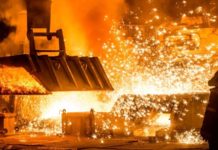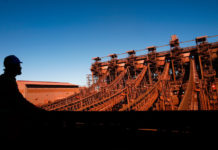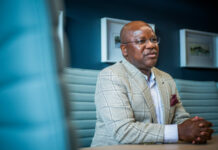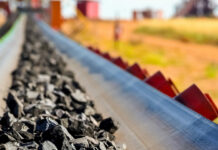
[miningmx.com] — MERAFE Resources CEO Stuart Elliot wants exports of chrome ore from South Africa to be banned, as China ramps up its ferrochrome production at the expense of South African producers.
Elliot conceded imposition of an outright ban seemed unlikely, but said he would like government to introduce export levys as well as controls on chrome export levels.
China has no chrome ore reserves of its own. It is an essential ingredient in the manufacturing of stainless steel. China is the world’s largest producer of stainless steel, while South Africa is the world’s dominant producer of chrome which is upgraded to ferrochrome for sale to stainless steel producers.
Giving a presentation of Merafe’s results for the six months to end-June in Sandton, Elliot said the rising level of South African chrome exports to China was of “huge concern”.
“If the South African ferrochrome producers were running flat out and were still not able to meet demand then there would be a case for the export of chrome ore from the country.
“But we are nowhere near that situation. We and the other South African ferrochrome producers had to cut back production this winter because of falling demand, higher electricity charges and lower prices.
“The Xstrata/Merafe joint venture will run, on average, at 50% of operating capacity.”
Elliot said exporting South African chrome ore cheaply to China improved the competitive position of that country’s ferrochrome industry.
This was detrimental to the SA producers as their cost base was driven up by factors such as rising electricity charges, labour costs and royalty taxes, while it faces a proposed carbon tax.
Elliot described the carbon tax as “a killer blow for energy intensive users in its current form”.
“‘The Chinese don’t have a problem imposing huge export levies when it suits them. One example is rare earth metals which do not seem to leave that country,” he said.
INDEPENDENT STUDY
Elliot said an independent study had been commissioned looking into the impact of chrome ore exports on both the ferrochrome producers and the overall South African economy.
“We expect to release that study to the public at the end of September and we will proceed from there to the department of mineral resources.”
Elliot added he was encouraged by a recent draft paper on beneficiation policy released by government, which identified ten key commodities, including chrome, and also highlighted the benefits of the Xstrata/Merafe Lion 2 ferrochrome expansion project.
According to figures presented by Merafe there was a 4% increase in stainless steel production to 17.4mt in the first six months of 2011 (16.7mt in the first half of 2010).
That increase was driven mainly by China which pushed up its stainless steel output 12% to 7mt (6.2mt). Merafe predicted a 6% rise in stainless steel production for calendar 2011 to 34.4mt from 32.4mt in 2010. “China is certainly not slowing down despite the observations made by those people who think it is,” Elliot said.
Global ferrochrome demand figures for the first half were virtually unchanged at 4.7mt but within that total demand from China jumped 9% to 2.25mt. Still, global ferrochrome supply rose 4% to 4.7mt (4.5mt) and China’s share of that supply jumped 12% to 1.2mt (1.1mt), while South Africa’s share was unchanged at 1.85mt.
According to Merafe’s statistics China imported 8.7mt of chrome ore during 2010 of which 3.1mt came from South Africa. During 2011 South African exports to China have been stepped up accounting for 2mt of the 4.4mt that China has imported year-to-date.
Merafe’s taxed profit for the six months to end-June dropped to R86m (R189m) but Elliot is looking for a better performance in the second half of the financial year. He said the current destocking of ferrochrome by stainless steel producers which had knocked ferrochrome prices back should be completed during the third quarter of 2011, while the nickel price had also levelled out.
“We expect improved trading conditions during the fourth quarter of 2011 and into 2012,’ he said.










